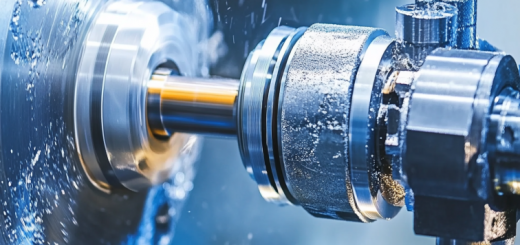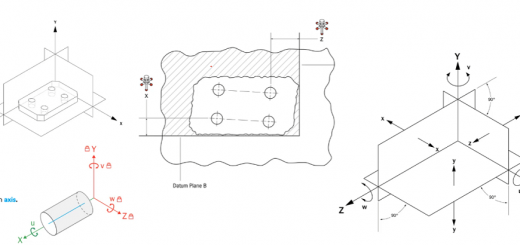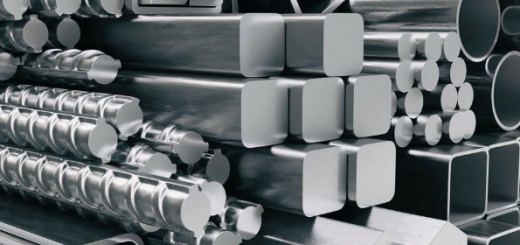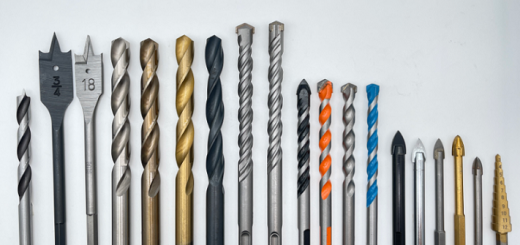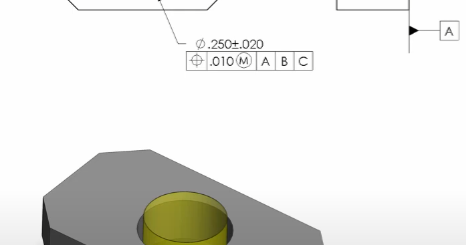3 vs 4 vs 5 Axis CNC Machining, What’s the Difference?
Milling is one of the key technologies used in CNC precision machining, applied in medical, aerospace, and mechanical parts. Generally speaking, the larger the range of positions that can be machined, the more complex the geometric shapes that can be produced. There are various types of milling machines, including three-axis, four axis, and five axis. What is the difference between three-axis, four axis, and five axis? What are their respective advantages? What products are they suitable for processing?
What is 3 axis CNC machining?
Three axis CNC machining is a widely used CNC machining technology in the manufacturing industry. It refers to the use of CNC machine tools to control the movement of tools or workpieces in the X, Y, and Z axes, thereby completing operations such as cutting, drilling, and milling of materials.
·X-axis: usually represents movement in the left and right directions.
·Y-axis: usually represents forward and backward motion.
·Z-axis: usually represents motion in the up and down directions.

|The advantages of three-axis CNC machining
Three axis CNC machining has significant advantages, making it highly favored in the manufacturing industry. Firstly, it is capable of completing complex cutting, drilling, and milling operations with extremely high precision, ensuring dimensional consistency and shape accuracy of the parts. Secondly, the high degree of automation of three-axis CNC machine tools reduces reliance on manual operations, improves production efficiency, and reduces the incidence of human errors. In addition, three-axis CNC machining has strong adaptability, suitable for various materials from metals to composite materials, and can flexibly respond to different machining tasks. It also has the characteristics of strong repeatability and high production efficiency, especially suitable for large-scale production. These advantages make three-axis CNC machining an indispensable technology in modern manufacturing.
What products are suitable for three-axis CNC machining?
Flat parts: Three axis CNC machine tools are very suitable for processing various flat parts, such as casings, panels, bases, etc. These types of parts typically have precise planar features and hole distribution, making them an advantageous area for three-axis machining.
Hole series parts: For parts that require precise drilling, tapping, and reaming, three-axis CNC machines can efficiently complete them. These types of parts are widely used in mechanical connection components, such as flanges, brackets, and couplings.
Simple 3D surface parts: Although three-axis CNC machine tools have limited capabilities in handling complex surfaces, they are still capable of handling some simple 3D surface parts, such as curved grooves, chamfers, and simple contour machining. These parts are commonly found in molds, fixtures, and decorative parts.
Mechanical components: Three axis CNC machine tools are commonly used to process mechanical components such as bearing seats, gearbox bodies, sliders, and guide rails. These parts typically require high-precision geometric shapes and good surface smoothness.
Electronic product casing: Three axis CNC machining is also widely used in the processing of electronic product casings, especially aluminum or plastic casings, such as those for mobile phones and laptops, which require precise cutting and drilling.
Aerospace and automotive components: In these industries, three-axis CNC machines are used to process various structural and functional components, such as engine covers, support frames, and various connectors. These parts usually require high strength and precision, making them ideal objects for three-axis machining.
What is 4 axis CNC machining?
Four axis CNC machining is a CNC machining technology that adds a rotating axis (usually referred to as A-axis or B-axis) on the basis of three-axis CNC machining. Compared with three-axis CNC machine tools, four axis CNC machine tools can not only control the movement of the X, Y, and Z linear axes, but also control the rotation of workpieces or tools around an additional axis. This rotation axis is usually perpendicular to the X or Y axis, allowing the machine tool to machine workpieces at more complex angles and positions.

The advantages of four axis CNC machining
Four axis CNC machining has significant advantages, making it highly favored in the processing of complex parts. Firstly, the added fourth axis allows the workpiece or tool to rotate around an additional axis, thereby achieving more angle cutting and contour machining. This greatly improves the ability to process complex shapes and multi surface parts, reduces the need for multiple clamping and repositioning, and significantly enhances processing efficiency and accuracy. In addition, four axis CNC machine tools perform particularly well in manufacturing special geometric structures such as helical surfaces and oblique holes, and can cope with more complex machining tasks. Overall, four axis CNC machining not only expands the machining range, but also has been widely used in various industries through more efficient processes and more accurate results.
What products are suitable for four axis CNC machining?
Aerospace parts: Four axis CNC machine tools are very suitable for processing complex components in the aerospace field, such as turbine blades, engine parts, and aircraft structural components. These parts typically have complex surfaces and precise geometric shapes, and four axis CNC machining can cut at different angles to ensure high precision and reliability of the parts.
Automotive parts: In automotive manufacturing, four axis CNC machining is commonly used to process complex parts such as engine cylinder blocks, gearboxes, suspension system components, and exhaust pipes. Due to the need to process these parts on multiple surfaces, a four axis machine tool can complete multi-faceted machining with one clamping, improving production efficiency.
Medical devices: Four axis CNC machining is also widely used in the manufacturing of precision medical devices and implants, such as orthopedic implants, dental instruments, and surgical tools. These products typically require extremely high precision and complex shapes, and four axis machining can meet these strict requirements.
Mold processing: Four axis CNC machine tools are very suitable for processing complex cavities and surfaces in injection molds, die-casting molds, and stamping molds. By increasing the rotation axis, four axis machining can accurately process multiple sides and angles of the mold, reduce the repositioning of the workpiece, and improve the accuracy and consistency of mold processing.
Artworks and carvings: Four axis CNC machining performs well in creating complex artworks and carvings, especially those that require carving and detail processing from multiple angles. Four axis machine tools can easily handle these tasks and achieve more complex and refined carving effects.
Spiral and threaded parts: Four axis CNC machine tools are very suitable for machining spiral parts and threaded structures, such as screws, turbines, drill bits, etc. The machining of such parts usually requires precise rotation control, and four axis machining can complete multi angle cutting and forming in one step.
What is 5 axis CNC machining?
Five axis CNC machining is an advanced CNC machining technology that adds two rotation axes (usually referred to as A-axis and C-axis) to the traditional three-axis (X, Y, Z), allowing the workpiece or tool to move or rotate in five different directions. Compared with four axis CNC machining, five axis CNC machining provides higher flexibility and complexity, enabling more complex geometric shapes to be machined and reducing the need for multiple clamping and repositioning.

The advantages of five axis CNC machining
Five axis CNC machining has many significant advantages, making it particularly outstanding in handling complex and high-precision parts. Firstly, five axis machine tools are capable of cutting in five different directions, providing great flexibility and multi angle machining capabilities. This multi axis linkage can complete complex shape machining in a single clamping, significantly improving production efficiency and reducing the number of workpiece relocations, thereby reducing errors and improving machining accuracy. In addition, five axis machining can accurately process complex three-dimensional surfaces, slopes, and irregular parts, especially suitable for design requirements that are difficult to achieve on traditional three-axis or four axis machine tools. This technology is widely used in fields such as aerospace, automotive manufacturing, medical equipment, and mold processing, providing efficient and precise machining solutions for these industries.
What products are suitable for five axis CNC machining?
Aerospace parts: Five axis CNC machining is widely used in the aerospace industry for manufacturing complex parts such as turbine blades, engine components, and aircraft structural components. These parts typically have complex surfaces and precise geometric structures, and five axis machining can cut at multiple angles, ensuring high precision and quality.
Automotive parts: In automotive manufacturing, five axis CNC machine tools are used to process engine components, transmission housings, suspension system parts, and other high-precision components. These parts often need to be machined on multiple surfaces, and five axis machine tools can improve machining efficiency and achieve complex geometric shapes.
Medical devices: Five axis CNC machining also has important applications in medical device manufacturing, such as producing implants, surgical tools, and dental instruments. These products typically require extremely high precision and complex shapes, and five axis machining can meet these strict requirements.
Mold processing: Five axis CNC machine tools are very suitable for manufacturing various injection molds, die-casting molds, and stamping molds. These molds usually have complex cavities and multi-faceted processing requirements. Five axis machining can complete multi angle cutting and forming at once, improving the accuracy and consistency of the mold.
Precision instruments: In the field of precision instruments, five axis CNC machining is used to manufacture complex instrument components and parts, such as optical equipment, measuring tools, and high-precision mechanical components. These parts require high precision and complex machining capabilities, and a five axis machine tool can provide an ideal solution.
Artworks and carvings: Five axis CNC machining is also widely used in the manufacturing of artworks and carvings, especially those that require fine carving from multiple angles. Five axis machine tools can achieve complex carving effects and high-quality artistic works.
3 vs 4 vs 5 Axis CNC Machining, What’s the Difference?
| Feature | 3-Axis CNC Machining | 4-Axis CNC Machining | 5-Axis CNC Machining |
|---|---|---|---|
| Axes | 3 (X, Y, Z axes) | 4 (X, Y, Z axes + A or C axis) | 5 (X, Y, Z axes + A and C axes) |
| Degrees of Freedom | 3 linear movements | 3 linear movements + 1 rotational movement | 3 linear movements + 2 rotational movements |
| Machining Capability | Suitable for simple 2D and basic 3D parts | Can handle multi-face and complex angle parts | Ideal for highly complex 3D surfaces and irregular parts |
| Workpiece Clamping | May require multiple re-clamping | Reduces need for re-positioning | Minimizes re-positioning, enhancing machining efficiency |
| Machining Efficiency | Relatively lower, less efficient for complex parts | Improved efficiency for complex multi-face parts | High efficiency, capable of complex tasks in a single setup |
| Machining Precision | Suitable for tasks with lower precision requirements | Enhanced precision for complex shapes | Offers the highest precision, suitable for high-precision and complex tasks |
| Application Areas | Typically used for simple mechanical parts and basic machining | Used for parts requiring multi-angle cutting, such as aerospace | Widely used in aerospace, automotive, medical devices, and high-precision fields |
| Examples | Flat parts, simple 3D shapes | Mold machining, multi-face complex parts | Turbine blades, complex molds, precision instrument parts |


